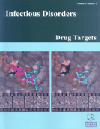
Full text loading...
We use cookies to track usage and preferences.I Understand
Pimples, blackheads, whiteheads, etc., are common types of acne that pop up on the skin each time, whenever dead cells and oils obstruct the outgrowth of hair from the hair follicle. It is very common to observe this condition in teenagers, but regardless of age, if the causing condition is met, acne can occur at any point in life. The characteristic feature of all types of acne is it starts with inflammation of the skin. These inflammatory marks (like black spots, pores, small scars, etc.) leave behind even when acne disappears. Plants like vegetables and flowers are naturally rich in different types of polyphenolic compounds called flavonoids. These flavonoids have various key functions, from guiding cell movement to maintaining oxidative pressure in the body. In this study, we discuss six types of flavonoids that have the potential to be used as medicine for the treatment of different kinds of skin breakouts. Moreover, the result of molecular docking of different proteins that have an association with acne is also discussed.

Article metrics loading...

Full text loading...
References


Data & Media loading...

